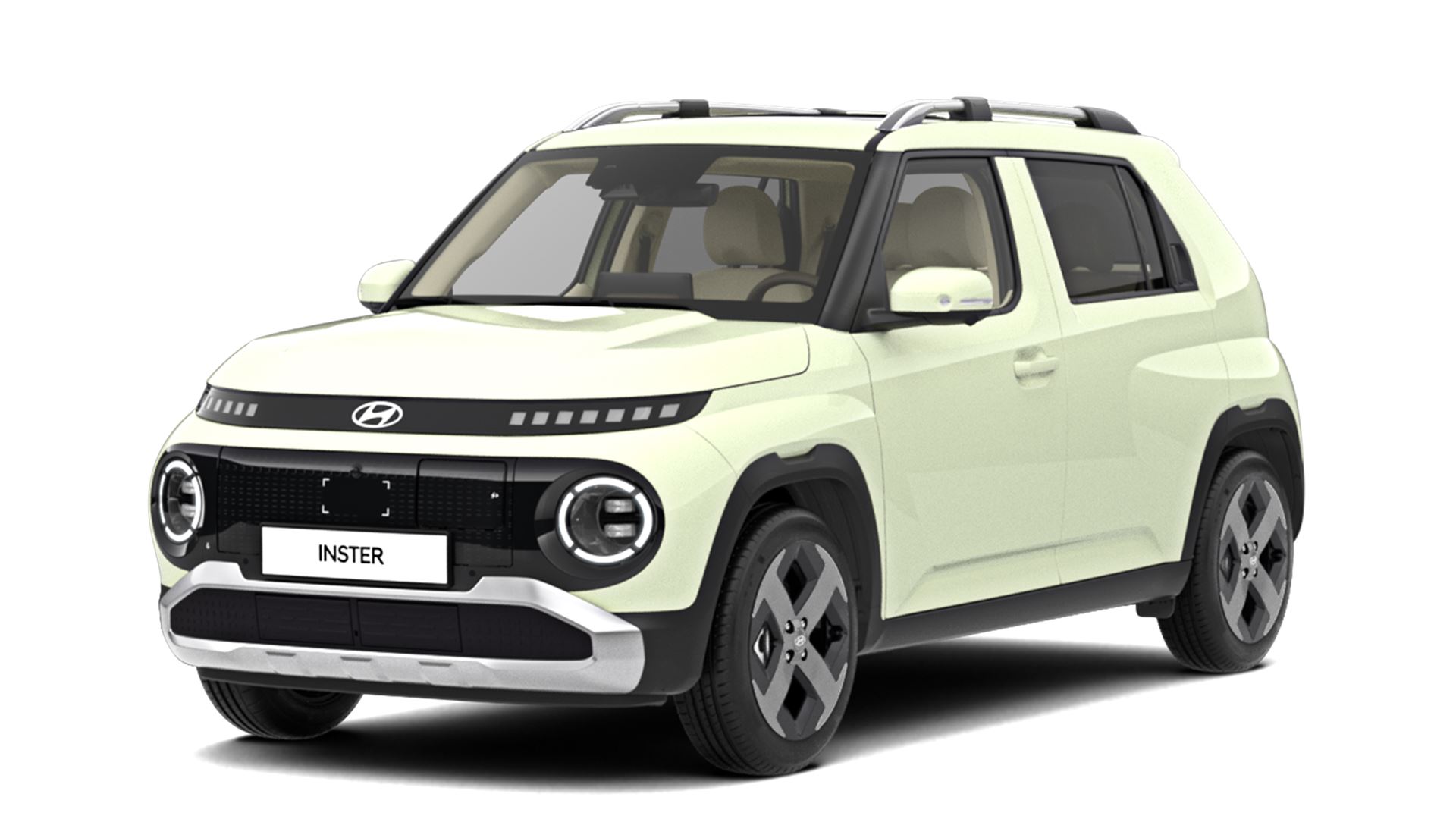Hyundai Inster
Vertex electric FWD automatic
Sustainability Rating: 5 stars
Our verdict:
The Inster is Hyundai’s new fully electric supermini. It impresses with both its sustainability scores and good equipment. Additionally, Euro NCAP recently awarded it 4 stars for safety. In Green NCAP it excelled with 5 stars and an average score of 96%.
- The Inster has no tailpipe emissions and scores well on tyre and brake abrasion due to its low weight and strong energy recuperation. Production and energy supply emissions have minimal impact on the score.
- Energy use is low overall. Even the highest value (27.4 kWh/100 km in winter) is modest for EVs, while urban and real-world tests show excellent efficiency (12.6–14.1 kWh/100 km).
- The Inster’s small size, low consumption, and small battery result in high environmental scores. Lifecycle emissions are 114.5 g CO2-eq./km, with 63 from production in South Korea.
Driving Experience
Our comments:
- Most of the estimated warm weather real-world consumption values of the Inster are seen as ‘good’ , while the predicted cold weather figures are all in the ‘adequate’ range. Although the 49 kWh battery is relatively small, the achievable driving ranges in urban and rural scenarios are adequate for both warm and cold weather conditions. Highway range, however, drops to ‘poor’, making it clear that the motorway isn’t Inster’s preferred space. The consumption readings on the board computer display are accurate.
- Drivers are advised to preheat the vehicle before cold winter trips, if possible. By doing so, an increased driving range can be achieved. The possible values are not high for the Inster, but are still a valuable contribution to a longer driving range in cold conditions. The small Hyundai failed to impress with quick cabin heat-up in cold winter conditions. A fast temperature increase was measured only around the rear head area, while the other positions needed much longer. However, the Inster can be quite well equipped with additional heating functions, which may compensate for the slow cabin air warm-up and provide quick comfort to the driver and the front passengers. Green NCAP tested a high trim, which featured all the additional extras. The cabin thermal insulation is evaluated as ‘poor’.
- The vehicle’s home charging efficiency is standard with a grid-to-battery-output value of 88.5%. The fast DC charging is seen as adequate. In its higher trims, the car can be equipped with vehicle-to-load charging functionalities, which allows it to supply 230 V to external devices. The implementation of this function in a vehicle of this class is remarkable and deserves praise. Potential buyers are advised to study in detail the available equipment options, as they can vary between countries and additional adapters and sockets are not always included.
See datasheet for more details.

